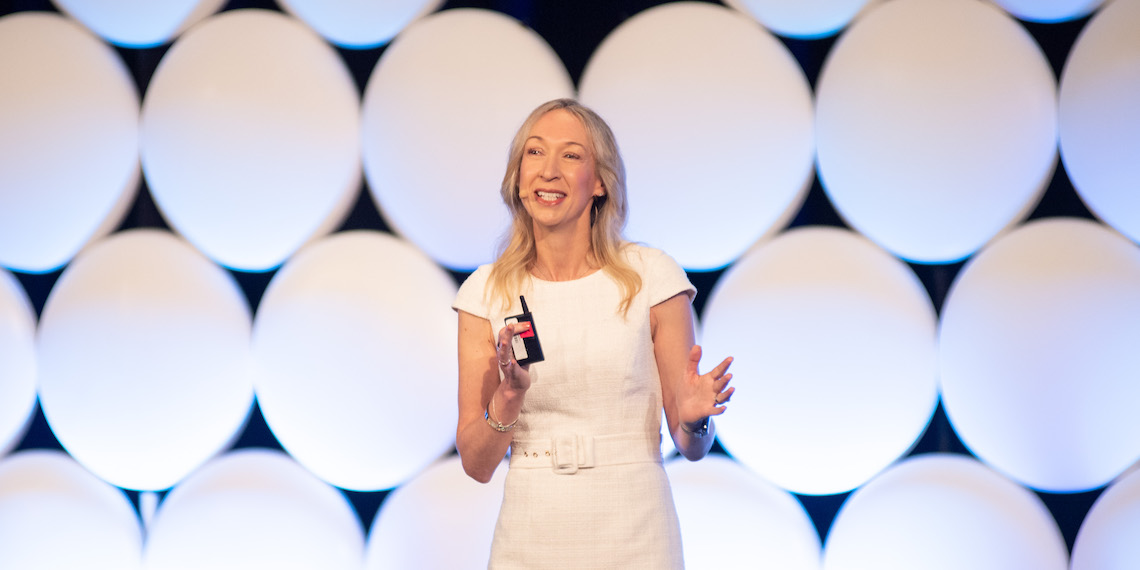Making the most of neurodivergence and anxiety

Opening the third and final day of Ozwater’23, Patricia Falcetta and Dr Jodie Lowinger presented delegates two different perspectives on how our brains work – and why embracing different ways of thinking can work to our advantage.
When Falcetta, who has attention deficit hyperactivity disorder (ADHD), was diagnosed as neurodivergent, it brought some things into focus for her.
“I've lived my whole life thinking that there was something wrong with me. That there were certain traits I needed to fix, such as being too loud vocally, too intense, too confident for a female, and not quite fitting in with societal expectations of what a female should be like,” she said
“I now realise that these are neurodivergent traits, and – in fact – many of them are strengths.”
The founder and director of disability services and support organisation Social Living Solutions, Falcetta helped conference delegates understand the importance of creating workplace environments in which people with neurodivergence can thrive.
Through their difference, people with neurodivergent conditions such as ADHD or autism bring many desirable qualities to day-to-day life, Falcetta said.
“Neurodivergent people tend to come at problems from a different angle, have great attention to detail and possess out-of-the-box thinking. Our productivity is very high, we're loyal friends and employees, are super-efficient around the office, possess a strong work ethic, [and] an ability to hyperfocus,” she said.
“Workplaces are assured of consistent productivity. Autistic people don't tend to lie and won't take sick days unless they’re really truly sick, and tend to follow instructions to the letter
“Unconscious bias, intersectionality, and psychological safety are what affects many of us who are divergent from performing to our full potential in the workplace and prevents many of us from disclosing.”
Challenging environments
However, if neurodivergent people feel they cannot safely disclose their condition, they run the risk of being viewed as underperformers, not being team players and not fitting in with the workplace culture.
Falcetta shared examples of ways some work environments might make it harder for neurodivergent people to thrive, such as fluorescent lights that impede focus, kitchen smells with unpleasant sensory effects, or a lack of tolerance for wearing noise-cancelling headphones.
“This is where I put this question to you: Is it actually the individual that's disabled? Or is it the environment that is disabling them? Do we need to create awareness and education around this so that we provide environments that are enabling for all?” she asked.
“And when staff feel safe to disclose a recent diagnosis – such as mental health diagnosis, being neurodivergent, or both – is your workplace and the environment you're providing socially safe?
“Are all staff included? And do they share a sense of belonging? If not, what can you do about it? How can you ensure inclusion in a way that meets their reasonable requests? Can you adjust communication styles so that all staff can provide input differently? Can a team member, dyslexic or otherwise, give a verbal report or use speech-to-text?”
No worries
Lowinger, a clinical psychologist and the founder of MindStrength, also focused on questions of the mind, proposing to delegates that commonly experienced feelings of anxiety could be the basis for empowered action.
“What I would love you to recognise is what anxiety actually is. It's our physiological reaction to perceived threat or real threat in our environment,” she said.
“You experience anxiety because you want people and the world around you to be safe and well.”
However, Lowinger said, that same sense of passion, purpose and empathy, can also be leveraged as a “superpower”.
She proposes four steps in taking this journey, which she describes as the MindStrength Methodology.
“What we want to be aware of as step one is our fight-or-flight driven thoughts, feelings and actions. What are we thinking? What is the worry story that's playing out?,” Lowinger said.
“Step two is awareness of the heart-driven pull towards your passion and your purpose. We want to move out of the fear-driven push away from stuffing or push away from fear of being judged negatively, and move into clarity on our mission, our purpose, our values, our strategic goals and our strategic actions.”
Step three, she continued, involves moving away from the feelings of step one and realigning yourself with step two.
“When we have clarity of this alternative pathway, it becomes much easier to stand up to fear-driven thoughts, feelings and actions,” Lowinger said.
“And step four: what we want to do is make thriving, high performance sustainable over the long term.
“And sustainability is built out of respecting our mind-body connection. Wellbeing is not a bolt-on to high performance. Wellbeing is absolutely core to high performance: respecting your mind, respecting your body.”
Essential to following the path of these four steps is understanding that worrying, while natural, leads to feelings of uncertainty and helplessness, she said.
“A practical alternative is problem-solving and action-planning around what's in your control, because problem solving leads to solutions,” Lowinger explained.
“Worry typically is about focusing on all the things that are out of our control. Problem-solving is empowering: identifying your action plan, implementing your plan, reviewing and revising.”


